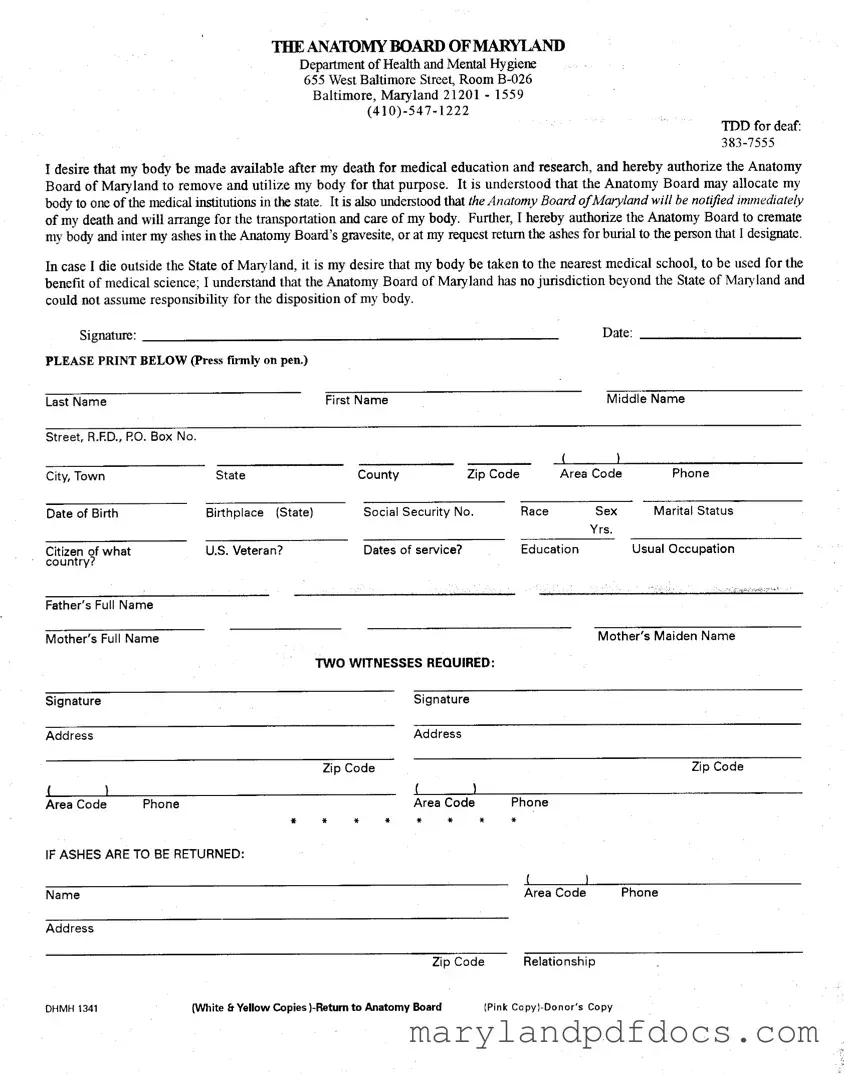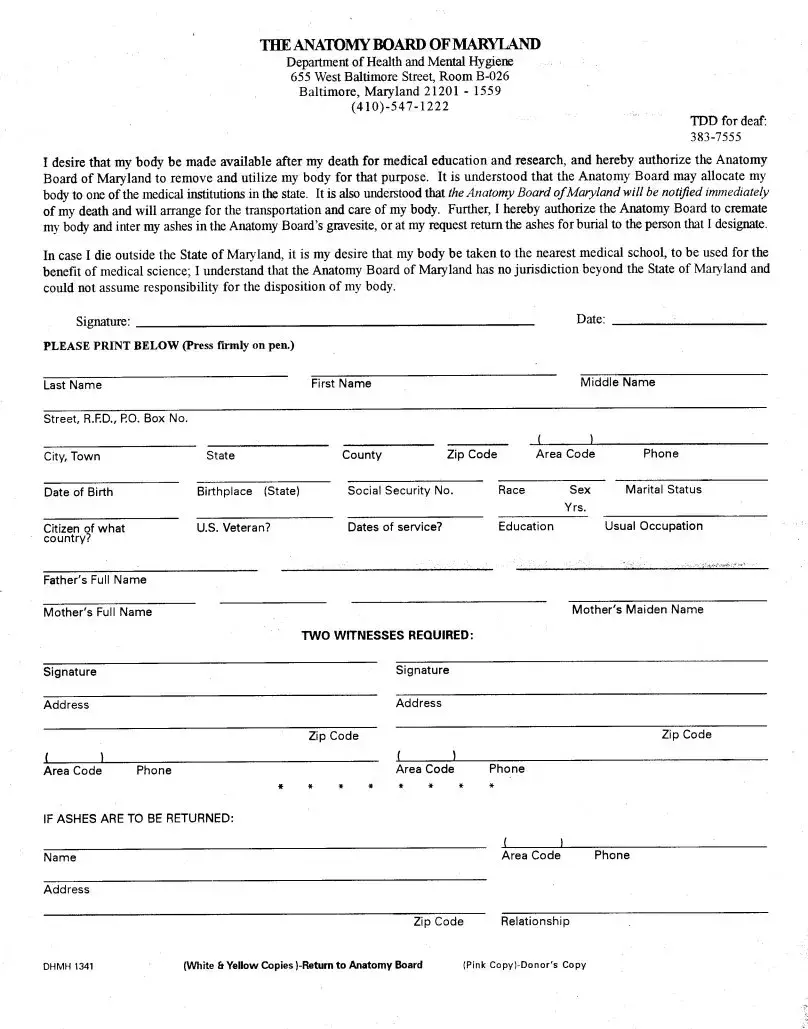What is the purpose of the Maryland Anatomy form?
The Maryland Anatomy form allows individuals to consent to the use of their body for medical education and research after their death. By signing this form, a person authorizes the Anatomy Board of Maryland to remove and utilize their body for these important purposes, contributing to the advancement of medical knowledge and training.
Who can sign the Maryland Anatomy form?
Any adult individual who is of sound mind can sign the Maryland Anatomy form. This includes residents of Maryland who wish to donate their body for medical education and research. It is essential that the individual understands the implications of the donation and provides their informed consent.
What happens to the body after death?
Upon the individual’s death, the Anatomy Board of Maryland must be notified immediately. They will then arrange for the transportation and care of the body. The board may allocate the body to one of the medical institutions in Maryland for educational purposes. This process ensures that the body is treated with respect and dignity.
Can I request how my ashes are handled after cremation?
Yes, individuals can specify how they would like their ashes to be handled after cremation. The Maryland Anatomy form allows donors to choose whether their ashes will be interred at the Anatomy Board’s gravesite or returned to a designated person for burial. This choice provides peace of mind regarding the final disposition of one’s remains.
What if I die outside of Maryland?
If an individual dies outside of Maryland, the form indicates that their body should be taken to the nearest medical school for use in medical science. However, it is important to note that the Anatomy Board of Maryland does not have jurisdiction outside of the state and cannot assume responsibility for the body’s disposition in such cases.
What information is required on the Maryland Anatomy form?
The form requires several pieces of information, including the individual’s full name, address, date of birth, social security number, race, sex, marital status, and education. Additionally, the names of the individual’s parents and information regarding U.S. military service may also be requested. This information helps ensure proper identification and processing of the donation.
Are witnesses required to sign the Maryland Anatomy form?
Yes, the Maryland Anatomy form requires the signatures of two witnesses. These witnesses must also provide their addresses. Their signatures serve to confirm that the individual signing the form did so willingly and with an understanding of the document’s contents.

